Medial malleolar osteotomy
1. Indications
An osteotomy of the medial malleolus exposes the medial aspect of the body of the talus and allows the surgeon to protect the posteromedial deltoid branches from the posterior tibial artery which is the main blood supply to the body of the talus.
This approach is used to expose an irreducible fracture dislocation of the talus as well as fractures of the body of the talus and complex fractures of the neck with posterior extensions.
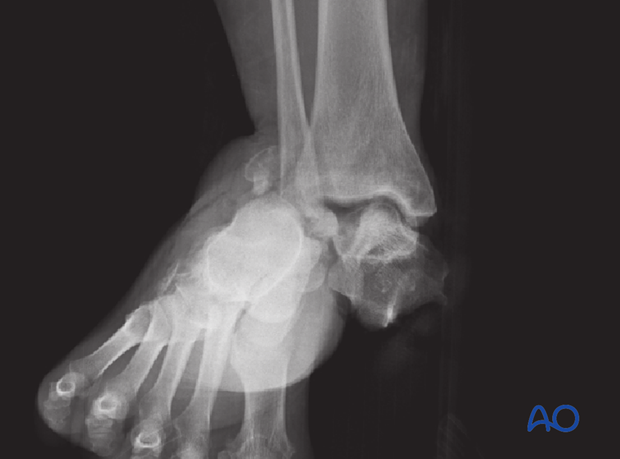
2. Anatomy
The blood supply to the body of the talus is complex. Most of the blood supply to the body is through the deltoid branches of the posterior tibial artery. The dorsalis pedis and peroneal artery supply the neck and the lateral third. Fracture dislocations can easily compromise the blood supply to the body of the talus and lead to avascular necrosis.
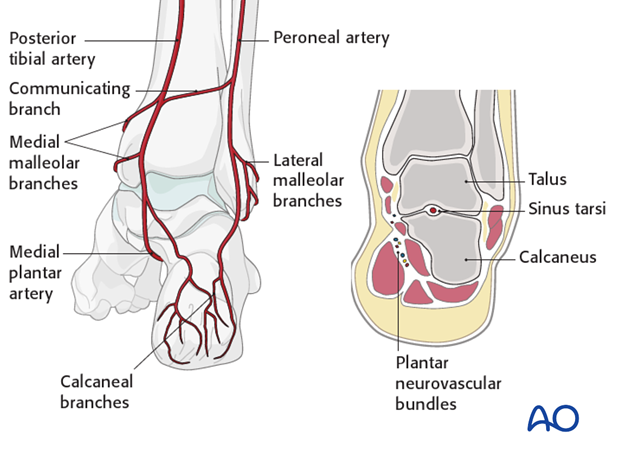
Note the deltoid branches of the posterior tibial artery and the artery of the tarsal canal. A posteromedial approach to the body of the talus would destroy its blood supply. Therefore, if the body has to be exposed, one utilizes an osteotomy of the medial malleolus.
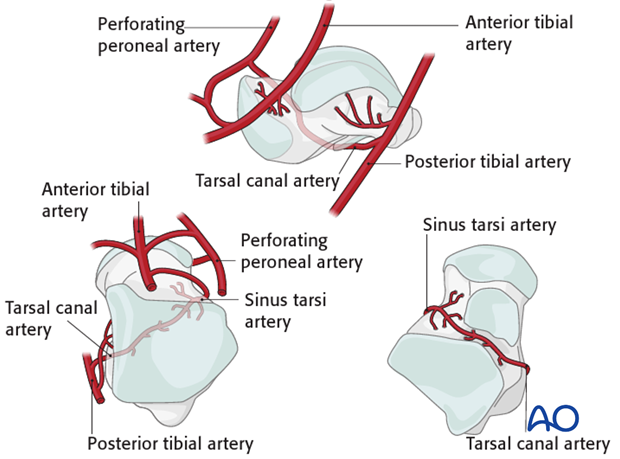
Blood supply to the talus
The deltoid branches are important to supply blood to the medial talar neck and talar body. Branches from the dorsalis pedis supply the talar head and most of the dorsal talar neck. The artery of the tarsal canal coming from branches off of the posterior tibial artery supply most of the talar body.
The peroneal artery has the least contribution laterally.
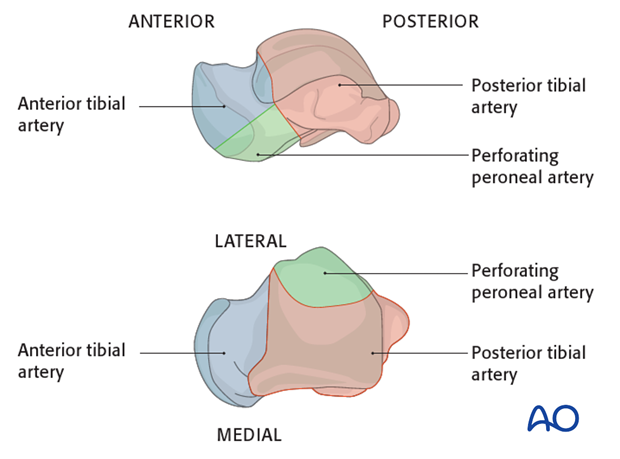
3. Incision
Skin incision
This incision follows from the medial malleolus proximally to the base of the first metatarsal distally. Only that portion needed is used, but is often extended proximally for more complex fractures.
Importantly, the deltoid branch of the posteromedial vasculature must be preserved as it supplies a majority of the medial talus.
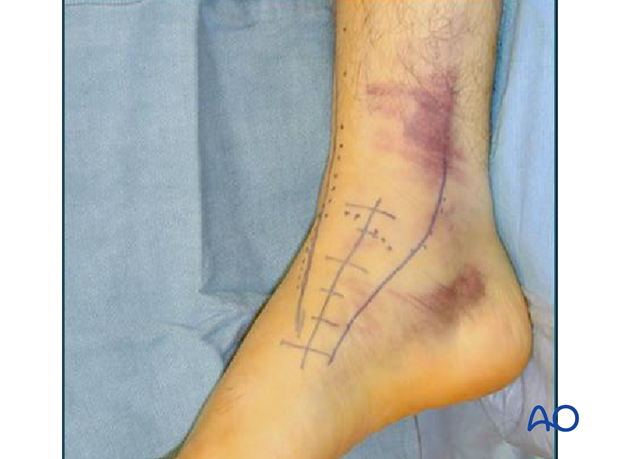
Deep dissection
By extending the anteromedial incision proximally, one reaches the medial malleolus.
The capsule should be opened in order to identify the apex between the medial malleolus and the plafond of the tibia.
This allows one accurate positioning of the medial malleolar osteotomy.

4. Planning of the osteotomy
The osteotomy must be in such a way that it avoids the distal tibial plafond.
The articular surface is violated only in the infratectal region.
This is done first by visualizing the joint surface before cutting. The medial malleolus is predrilled and pretapped. Then an oscillating saw cuts the bone at 90 degrees to the screw position but does not penetrate the articular cartilage.
The medial malleolus is then cracked and displaced distally for access to the talus.
In that fashion, the articular surface can be re-apposed without articular loss at the end of the operation.
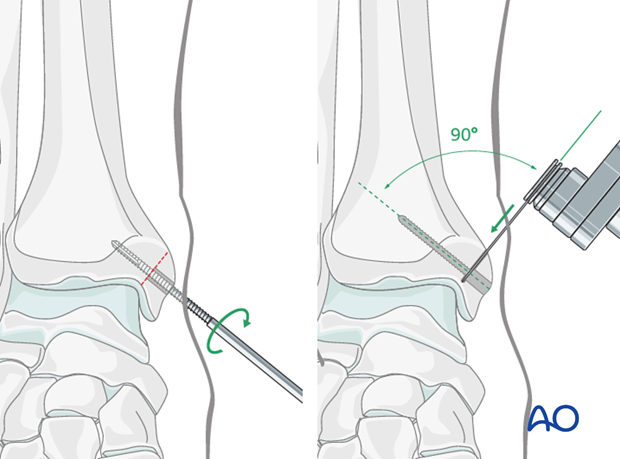
5. Osteotomy
After pre-drilling and pre-tapping (for the lag screws), the saw cut goes almost to the articular surface.
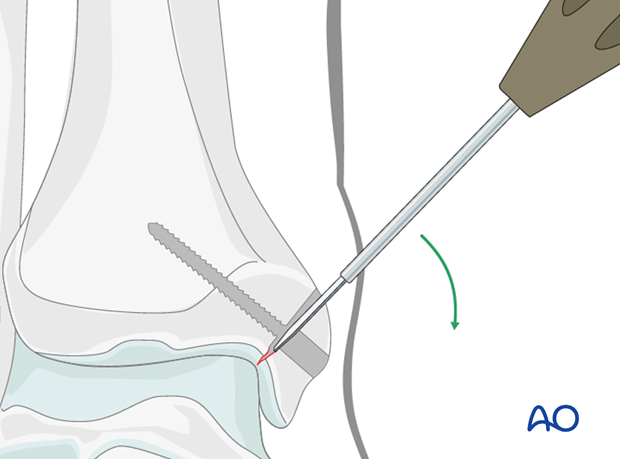
Anterior and posterior small flat retractors are inserted around the malleolus into the joint before the osteotomy is completed to protect the dome of the talus and the posterior tibialis tendon.
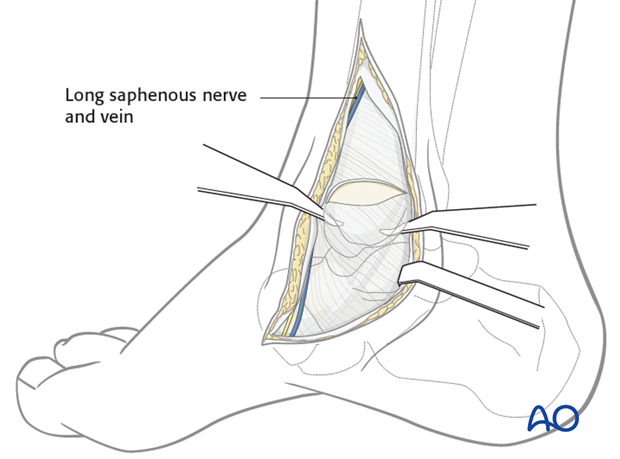
Then an osteotome is used to crack the medial malleolar piece and to reflect it distally on its retained soft tissue and blood supply.
Once the medial malleolus is out of the way, one has excellent access and one can then deal with an irreducible dislocation of the body, or fractures of the body and neck of the talus.
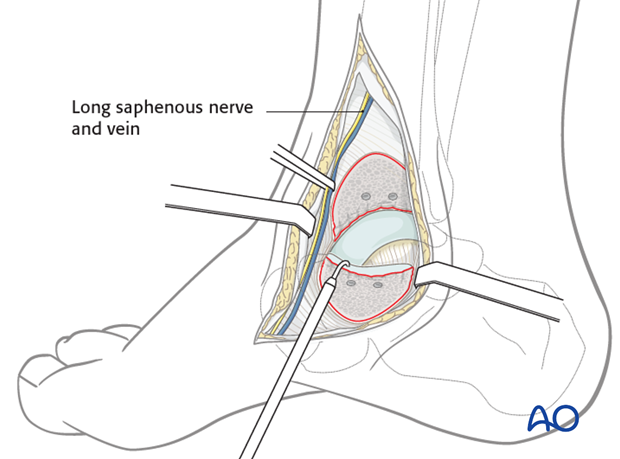
6. Repair of the osteotomy
Once the talar reconstruction is complete, the medial malleolus is reduced and fixed with the pre-drilled and pre-tapped lag screw. This secures absolutely stable fixation of the osteotomy.














